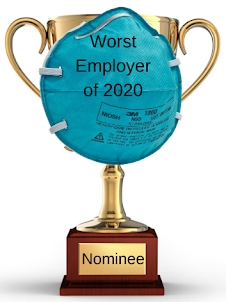Thanks to the new U.S. Securities and Exchange Commission rules that went into effect Nov. 9, publicly traded companies are required to disclose human capital information such as workforce cost, human capital ROI and turnover rate, among others.
There is no grace period, so publicly traded companies must begin disclosing this human capital information starting with their Nov. 30, Dec. 31 or Jan. 31 quarterly or annual public financial statement, noted David Vance, executive director for the Center for Talent Reporting, in a blog post on Chief Learning Officer.
What this means for publicly traded companies is: they must be prepared with the right data for their next public financial release. The SEC does not require specific metrics but wants appropriate information for employee attraction, development and retention at minimum.
There’s leeway in the metrics you can report
Various resources and reports suggest what types of measurements employers can rely on. Vance suggested the following in Chief Learning Officer:
Attraction: Time to fill, time to fill critical positions, percentage of positions filled internally, percentage of critical positions filled internally.
Development: Total cost of training and development, percentage of employees who receive training in compliance and ethics, percentage of employees who receive any training, average hours of formal training per year, percentage of leaders who receive training, percentage of leaders who receive leadership development.
Retention: Turnover, turnover for critical positions.
Additional recommended metrics: Employee engagement score, leadership trust score, diversity by gender, age, disability, race or national origin, leadership diversity, pay equity, human capital ROI, total workforce cost, number of full time employees, contingent/contract and temporary workers.
The idea behind this is so that potential investors or stakeholders have all the information they need about a company before they make their investment or voting decision. A PwC report clarified that specific metrics aren’t required so that these human capital disclosures “will be tailored to a company’s own business or industry using management’s judgment and that they may evolve over time.”
Human capital disclosure has been gaining traction the past few years, with the International Organization for Standardization passing the first-ever standard for human capital reporting in November 2018. The decision prompted HR analytics expert Jac Fitz-enz to explain what this means for the field of HR. “An ethical code, a body of research, specialized education and performance standards are the basis of a profession. The adoption of ISO standards supports human resources’ claim to be a profession,” he said.
Even as far back as 2015, Deloitte Consulting Managing Director and workforce management expert Lisa Disselkamp said, “To say workforce management outcomes affect shareholder value and business strategy is no understatement.”
Collecting human capital data
The right workforce management software can help organizations collect appropriate metrics for SEC disclosure. Workforce.com allows organizations to easily compile metrics including:
- Level of compliance with wage and hour laws.
- Employee feedback scores.
- Employee star ratings and performance scores.
- Data security for employees.
- Employee retention rates.
- Absence management and absence rate (i.e., rate of not showing up).
- Schedule flexibility.
- Payroll error rate and amounts.
Human capital data collection is simple with this tool. Data on employee feedback scores or schedule flexibility can give employers insight on employee engagement or satisfaction. Plus, employers can easily keep track of how many hourly employees they have in the system versus contract or contingent workers. Rates of employee absenteeism can inform organizations on how engaged employees are and how to help predict turnover.
Don’t fall behind on your new reporting requirements. If you’re in the market for a new workforce management software, Workforce.com can provide those needs while also giving managers access to key human capital metrics.







